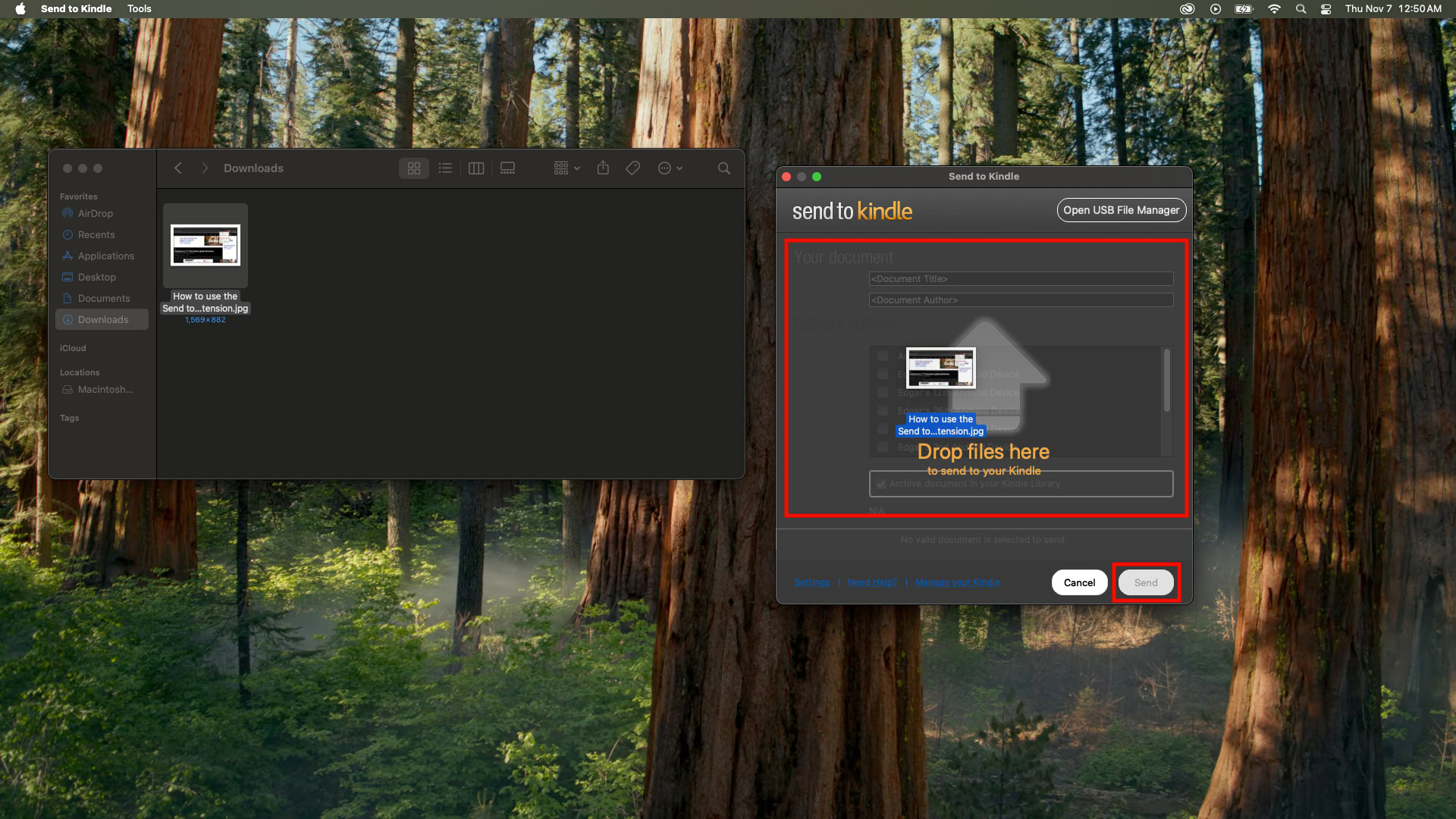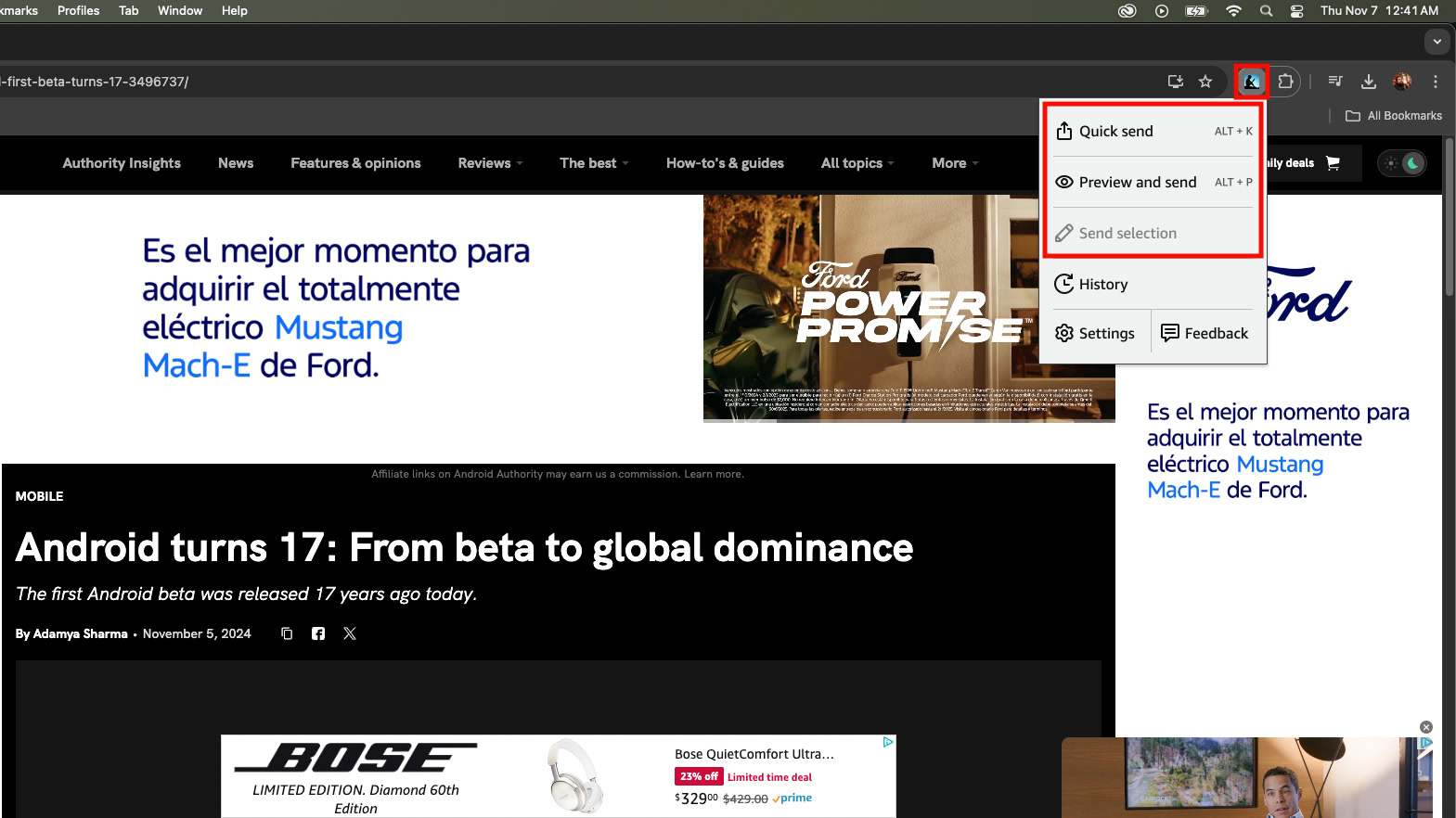Affiliate links on Android Authority may earn us a commission. Learn more.
How to sideload content onto a Kindle
Published onNovember 7, 2024
Amazon Kindle eReaders are among the most popular in the market, but Amazon is particularly known for pushing its own products and services. No matter how much Amazon wants you to buy its books, magazines, and more, it’s definitely possible to sideload content onto a Kindle. There are actually a few methods; let’s go over them together.
QUICK ANSWER
There are three ways to sideload content onto a Kindle eReader. The easiest one is Amazon's own Send to Kindle, which you can use from the web or one of the official apps. Your Kindle will also have a dedicated email address, and you can send emails with attached files to it. The least convenient method is to transfer files using a USB cable, though it may be more straightforward if you're transferring many files simultaneously.
JUMP TO KEY SECTIONS
Warning: Those with newer 2024 Kindle readers read this Amazon statement first!
Customers can connect their new Kindle devices to a computer to transfer files. On Windows, it’ll appear as Kindle in File Explorer. On Mac, customers with the new 2024 devices will need to install additional software (e.g., Android File Transfer or OpenMTP). Customers can still transfer books and documents from their computer via USB or use the Send-to-Kindle service. They can no longer use My Content & Devices to download and transfer books to the new 2024 devices via USB. Content available in My Content & Devices is visible on the device in their Kindle library.
You can learn more about these changes here.
Supported files you can sideload onto a Kindle
First things first, you can’t just sideload any file onto a Kindle reader. Amazon readers only support a select variety of file formats. Here they are:
- Microsoft Word (.DOC, .DOCX)
- HTML (.HTML, .HTM)
- RTF (.RTF)
- Text (.TXT)
- JPEG (.JPEG, .JPG)
- GIF (.GIF)
- PNG (.PNG)
- BMP (.BMP)
- PDF (.PDF)
- EPUB (.EPUB)
Use the Send to Kindle website or app
Amazon may be a bit selfish and wants you to buy all your eBooks from it, but it also isn’t against sideloading content onto a Kindle. In fact, the online retailer has its own official tool for this, called Send to Kindle. This tool is available for the web, as well as the Android, iOS, macOS, and Windows apps. There’s even a Chrome extension!
How to use Send to Kindle from a web browser:
- Launch your browser of choice and go to www.amazon.com/sendtokindle.
- If you aren’t logged into your Amazon account, go ahead and do so by clicking on Sign in.
- When ready, click on Select files from device.
- Look for the file you want to sideload onto a Kindle and select it.
- You can leave Add to your library toggled on if you want the file to sync across readers and supported devices. Otherwise, toggle off the option and select the device or devices to which you want to send the file.
- Click on Send.
How to use Send to Kindle app for Windows or Mac:

You can also simply launch the app, then drag and drop files to the Send to Kindle app.
Maybe you don’t care to send actual files to your Kindle, but like reading articles or other online content. The Chrome extension can help you send web pages to your Kindle.
Use the Send to Kindle Chrome extension to sideload websites onto a Kindle:
- Launch Chrome.
- Get the Send to Kindle for Google Chrome extension.
- Navigate to the page you want to sideload onto a Kindle.
- Click on the Kindle icon in the toolbar.
- Quick Send will send the full page to your library. Preview and send will give you a look at what the sent page will look like. If you selected specific text, you can click on Send selection.

How to sideload content onto a Kindle using the Android or iOS app:
Sideload content onto a Kindle via email
If you’re more of an email type of person, you might find it easier to use the traditional delivery method. All supported devices have a dedicated email address you can use to sideload content onto a Kindle.
- Find your Kindle’s email address by going to the Amazon Manage Your Content & Devices website.
- Go to the Preferences tab.
- Select Personal Document Settings.
- This section will expand and show your dedicated email addresses for all supported devices, including Kindle eReaders.
- Grab that email address and send an email to it. Attach the file you want to sideload onto a Kindle.
The only real downside to using email is that service providers have file size limitations. For example, Gmail only allows 25MB to be attached to emails. If you want to really go the most traditional way, or want to sideload a bunch of files onto a Kindle, you might want to use a cable instead.
Transfer files using a USB cable
Transferring files from a computer to a Kindle reader via a USB cable is really as simple as it is with any other device. Simply plug your Kindle reader into your computer using a cable with the right ports, launch the Kindle storage folder, and either copy/paste the files or drag and drop them.
FAQs
Amazon has a 200MB limit on files you can sideload onto a Kindle. That is a very large size for any text or image, so you should have no issue with this limitation.
Anyone who has access to your Kindle will get access to documents you send to it. That said, if you’re worried about online privacy, sent files are end-to-end encrypted.
Sideloading content onto a Kindle incurs no extra fees.